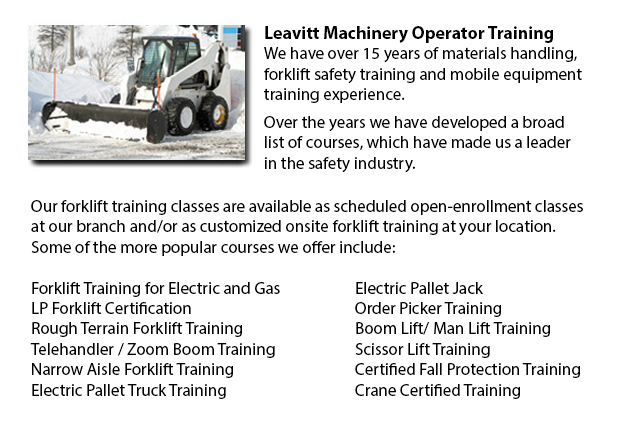
St Catharines Skid Steer Ticket - On a skid-steer loader, the lift arms are alongside the driver together with pivot points at the rear of the driver's shoulders. This makes them different as opposed to a conventional front loader. Due to the operator's nearness to moving booms, early skid loaders were not as safe as traditional front loaders, particularly throughout the operator's exit and entry. Modern skid-steer loaders nowadays have numerous features to be able to protect the driver like fully-enclosed cabs. Like other front loaders, the skid-steer model can push materials from one site to another, could load material into a trailer or a truck and can carry material in its bucket.
Operation
Many times a skid-steer loader could be used on a jobsite instead of a large excavator by digging a hole from the inside. First, the skid-steer loader digs a ramp leading to the edge of the desired excavation, and after that it makes use of the ramp so as to excavate material out of the hole. As the excavation deepens, the machine reshapes the ramp making it steeper and longer. This is a particularly useful technique for digging below a structure where there is not adequate overhead clearance for the boom of a big excavator. Like for instance, this is a common scenario when digging a basement below an existing structure or home.
The skid-steer loader attachments add much flexibility to the machinery. Like for example, conventional buckets on the loaders could be replaced attachments powered by their hydraulics comprising snow blades, cement mixers, pallet forks, backhoes, tree spades, sweepers and mowers. Several other popular specialized attachments and buckets consist of trenchers, angle booms, dumping hoppers, wood chipper machines, grapples, tillers, stump grinders rippers, wheel saws and snow blades.
History
The 3-wheeled front end loader was invented in nineteen fifty seven, by Louis and Cyril Keller in their hometown of Rothsay, in the state of Minnesota. The Keller brothers made this machine so as to help mechanize the method of cleaning in turkey barns. This equipment was light and compact and included a rear caster wheel which enabled it to turn around and maneuver within its own length, enabling it to carry out similar tasks as a conventional front-end loader.
The Melroe brothers of Melroe Manufacturing Company in Gwinner, N.D. purchased in 1958, the rights to the Keller loader. The company then employed the Keller brothers to assist with development of the loader. The M-200 Melroe was actually the end result of this partnership. This model was a self-propelled loader that was launched to the market during 1958. The M-200 Melroe featured a a 750 lb capacity, two independent front drive wheels, a rear caster wheel and a 12,9 HP engine. By 1960, they replaced the caster wheel together with a rear axle and introduced the first 4 wheel skid steer loader which was known as the M-400.
The M-400 shortly became the Melroe Bobcat. Normally the term "Bobcat" is used as a generic term for skid-steer loaders. The M-440 had an 1100 lb rated operating capacity and was powered by a 15.5 HP engine. The company continued the skid-steer development into the mid 1960s and launched the M600 loader.
-
St Catharines Heavy Equipment Training Schools
St Catharines Heavy Equipment Training Schools - When selecting an operator training course, there are a lot of heavy equipment training schools to choose from. To be able to ascertain the qualifications you will attain, it is very important to explo... More -
St Catharines Heavy Equipment Operator Training
St Catharines Heavy Equipment Operator Training - Heavy equipment operator training facilities that offer quality standards within the business, offering field performance work and additional machine training are really sought after training features... More -
St Catharines Forklift Training Programs
St Catharines Forklift Training Programs - Are you looking for work as a driver of a forklift? Our regulatory-compliant mobile equipment operator training offers instruction in kinds of forklifts, pre-shift check, fuel kinds and handling of fuels, an... More -
St Catharines Heavy Equipment License
St Catharines Heavy Equipment License - A heavy equipment license can be obtained by taking a certification and preparation course at a private training school or a vocational school. This license would qualify you to operate various types of heavy e... More -
St Catharines Overhead Crane Safety Training
St Catharines Overhead Crane Safety Training - Overhead crane safety training equips operators with skills and knowledge regarding crane safety precautions, accident avoidance, materials handling, and equipment and stock protection. Trainees will lea... More -
St Catharines Scissor Lift Training
St Catharines Scissor Lift Training - Scissor lifts should be operated proficiently to be able to protect the safety of the equipment and the wellbeing of others within the workplace. Operators who are skilled are trained to drive the specific type o... More -
St Catharines Telescopic Training
St Catharines Telescopic Training - Telescopic Handlers are a kind of forklift, normally known as telehandlers. This machine has been increasing in popularity due to its greater lift heights and its versatility. It is often preferred over the convent... More -
St Catharines Boom Lift Certification
St Catharines Boom Lift Certification - Utilizing elevated work platforms allow for maintenance operations and work to be carried out at elevated work heights which were otherwise unreachable. Boom Lift Certification Training educates workers about t... More

Forklift Certification St Catharines
TOLL FREE: 1-888-254-6157
St Catharines, Ontario
forkliftcertificationstcatharines.com/
Email Us
About Us


